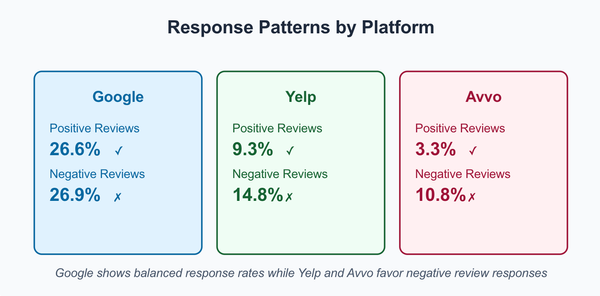How Different Countries Regulate Noise Levels in Residential Areas

The constant hum of modern cities, with their crowded streets, construction zones, and vibrant nightlife, often fades into the background of our daily lives. Over the years, governments and regulatory bodies worldwide have introduced various measures to regulate noise levels in residential areas. These measures, including noise ordinances, acceptable decibel levels for residential areas, and workplace noise standards like the OSHA noise standard, aim to protect public health and ensure a better quality of life.
This blog explores how different countries regulate noise levels, the standards they implement, and the health implications of living in noisy environments.
The Growing Concern of Noise Pollution in Residential Areas
Residential noise pollution, also known as community or environmental noise, includes sounds from traffic, construction, entertainment venues, and daily neighborhood activities. Unlike industrial noise, which is easier to measure and control, community noise is often unpredictable, varies by location, and directly impacts daily life.
Key Sources of Residential Noise
- Traffic Noise: Includes road, rail, and air traffic.
- Construction Activities: Machinery, drilling, and heavy equipment.
- Neighborhood Noise: Music, barking dogs, outdoor events, cafes, restaurants, or entertainment venue noises.
Health organizations, including the World Health Organization (WHO), have flagged this as a public health issue, linking prolonged noise exposure to hearing loss, sleep disturbances, cardiovascular problems, and psychological stress.
Key Noise Level Standards
International and national bodies have defined acceptable decibel levels for residential areas to address these concerns. Below is a summary of significant guidelines:
These residential noise regulations aim to balance modern urban living with the health and well-being of residents. Learn more about the challenges of enforcing noise level limits in the entertainment industry, or seek legal help today!
Noise Regulations in Different Countries
Rules about noise are based on how people live, how cities are built, and the specific noise problems in each place. Some countries limit acceptable decibel levels in residential areas, while others have quiet hours or use thoughtful planning to reduce noise. Let’s take a look at how different countries work to control noise and keep their neighborhoods peaceful.

United States
The U.S. still needs a unified national policy for residential noise but relies on local governments to set their noise ordinances. The OSHA noise standard, primarily for workplace safety, limits noise exposure to 85 dB over an eight-hour workday.
Residential areas, however, follow stricter regulations. Each city sets its acceptable decibel levels, often differentiating between daytime and nighttime limits.
Challenges:
- Urban areas like New York City face thousands of noise complaints yearly, showing the difficulty in enforcement.
- Public awareness of noise ordinances needs to be higher.
European Union (EU)
The EU has implemented the Environmental Noise Directive (END), which requires member states to create noise maps and action plans. These maps identify areas most affected by noise and help authorities implement mitigation strategies.
Many EU countries, like Germany, integrate noise management with urban planning. They designate "quiet zones" and use noise-reducing materials in infrastructure projects.
Canada
Canada has both federal and provincial noise regulations. While federal standards align with the OSHA decibel limit for occupational noise (85 dB), provincial regulations often set stricter limits for residential areas.
For example:
- Quebec: Allows 90 dB with adjustments for impulsive noise.
- Manitoba: Limits to 80 dB for an eight-hour workday.
Provinces also regulate peak sound pressure, with most setting a maximum of 140 dB for impulsive noise.
United Kingdom
The UK enforces residential solid noise regulations. Local councils manage noise complaints, especially during "quiet hours" (11 p.m.–7 a.m.). Urban planning policies incorporate noise-reducing measures like quieter road surfaces and building soundproofing.
For workplaces, the OSHA noise standard equivalent in the UK limits exposure to 87 dB daily, requiring hearing protection for workers exposed to high noise levels.
Germany
Germany’s noise ordinances are among the strictest in the world. Ruhezeit (quiet time) mandates silence from 10 p.m. to 7 a.m. on weekdays and all day on Sundays and public holidays. During these hours, residential noise should not exceed 50 dB.
Germany also integrates noise management into urban design by:
- Implementing noise-dampening road surfaces.
- Encouraging electric vehicle use.
Japan
Japan enforces strict residential noise regulations that are modified to different times of the day. Maximum allowable noise levels are:
- Daytime: 55 dB
- Nighttime: 45 dB
These limits are complemented by soundproofing standards for new buildings, especially in densely populated urban areas.

Health Impacts of Noise Pollution in Residential Areas
Noise pollution is not just a nuisance but a serious public health issue. Prolonged exposure to noise above acceptable decibel levels in residential areas can cause:
- Noise-Induced Hearing Loss (NIHL): NIHL is caused by prolonged exposure to loud sounds. Though preventable, it’s irreversible once it occurs. The CDC reports that 22 million U.S. workers face hazardous noise levels yearly, and 48 million Americans suffer hearing loss linked to workplace noise.
- Sleep Disturbances: Noise exceeding 30 dB at night disrupts sleep, causing fatigue, mood swings, and reduced productivity.
- Cardiovascular Issues: Chronic exposure to noise increases the risk of hypertension, heart disease, and stroke.
- Mental Health Problems: Persistent noise can lead to anxiety, stress, and reduced concentration.
Wrapping Up
Noise pollution in residential areas is a pressing global issue, but it is not insurmountable. We can create quieter, healthier living environments with effective regulations, modern technology, and active community involvement. International standards, like those from the WHO, and workplace-focused measures like the OSHA noise standard offer valuable frameworks for addressing this challenge.
Dealing with noise disturbances from your stubborn neighbors or facing false allegations of noise violations due to misunderstanding? Hiring a professional Real Estate lawyer or Landlord-Tenant lawyer can help you take control of the situation! Sign up now to connect with top-notch lawyers for noise pollution disputes and enjoy a stress-free life in your peaceful home.





